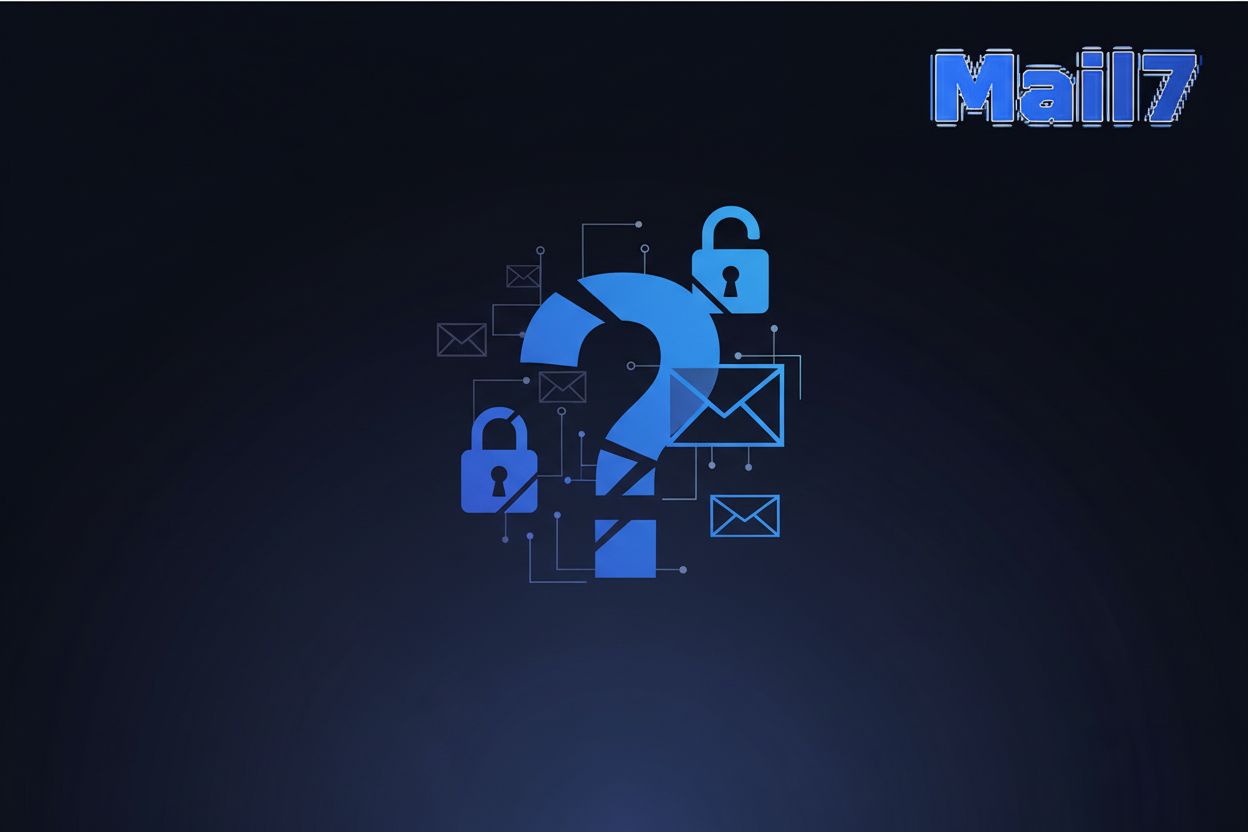Is Spam Prohibited in Certain Countries?
TL;DR
Understanding Global Anti-Spam Laws
Did you know that sending just one spam email uses about 0.3 grams of CO2 (The Carbon Cost of an Email: Update! - The Carbon Literacy Project)? It doesn't sound like much, but when you multiply that by the billions of spam emails sent daily, it adds up! So, let's get into the nitty-gritty of spam laws around the world.
Defining spam isn't as straightforward as you might think. What one person considers an annoying email, another might see as a legitimate marketing message. The definition often varies wildly depending on where you are and who you ask. It's kinda like trying to nail jelly to a wall, you know?
- One key aspect is user consent. Did the recipient explicitly agree to receive emails from the sender? Or did they get added to a mailing list without their knowledge? The answer to that question often determines whether an email is considered spam. Opt-in mechanisms are super important here.
- Cultural context also plays a big role. What's acceptable in one culture might be a major faux pas in another. For example, aggressive marketing tactics that are common in some regions might be frowned upon in places where people value privacy and directness. So, you really gotta know your audience.
Different countries have different rules when it comes to spam. And honestly, keeping track of them all can feel like a full-time job. Let's take a quick tour...
- The CAN-SPAM Act in the USA sets some ground rules for commercial emails. It requires senders to provide an unsubscribe option and avoid deceptive subject lines. Penalties for violations can be pretty hefty, which makes sense.
- Europe's GDPR and ePrivacy Directive take a much stricter approach to consent. Companies need explicit consent to collect and use personal data for marketing purposes. This means no more pre-ticked boxes or sneaky opt-out clauses! It's all about giving users control over their data.
- Canada has the CASL, which requires express consent for sending commercial electronic messages. There's also something called "implied consent," but that has limitations. Under CASL, implied consent typically applies in existing business relationships or if the recipient has publicly provided their email address for a specific purpose, but it's often time-limited and requires clear indications that the recipient expects to receive messages. Gotta dot your i's and cross your t's, eh?
- Other countries, like Australia and those in the Asia-Pacific region, also have their own anti-spam laws. For instance, Australia's Spam Act 2003 requires consent before sending commercial electronic messages and mandates clear identification and unsubscribe options. Each set of rules has its own quirks and requirements. So, if you're doing business internationally, you better do your homework!
So, what does all this mean for email marketers? Well, it means you can't just blast out emails to anyone and everyone. You need to be careful and respectful of people's inboxes.
- Getting verifiable consent is crucial. That means keeping records of when and how people agreed to receive your emails.
- Double opt-in is a great way to ensure that people really want to be on your list. This involves sending a confirmation email after someone signs up, asking them to click a link to verify their address. It adds an extra step, but it's worth it for the peace of mind.
- Providing clear unsubscribe mechanisms is also essential. Make it easy for people to opt out of your emails whenever they want. No one likes being trapped on a mailing list against their will.
- And finally, you need to monitor and maintain your email lists regularly. Remove inactive subscribers and those who have unsubscribed. Keeping your list clean will improve your deliverability and reduce the risk of being flagged as a spammer.
Navigating global anti-spam laws can be a headache, but it's a necessary evil. By understanding the rules and following best practices, you can protect your business and build trust with your audience.
How Anti-Spam Laws Affect Email Testing and Development
Okay, so you're building an email system, huh? Cool, cool. But- you really gotta think about spam laws. Ignoring them? That's a one-way ticket to trouble, trust me.
Alright, so how do these pesky anti-spam laws actually affect what you're building? It boils down to making sure your emails aren't just well-designed, but also squeaky clean legally. Think of it like this: you wouldn't drive a car without brakes, right? Same deal here.
- Ensuring emails adhere to legal requirements is about more than just throwing in an unsubscribe link. You've got to make sure that link actually works, that it's easy to find, and that unsubscribes are processed promptly. And don't even think about using misleading subject lines. Transparency is key.
- Testing unsubscribe links and processes might sound simple, but it's surprising how many companies mess this up. i mean- have you ever tried to unsubscribe from a list and it just… doesn't work? super frustrating. Your testing should simulate real user behavior: click the link, confirm the unsubscription, and verify they're actually removed from the list.
- Verifying sender authentication (spf, dkim, dmarc) is like proving you are who you say you are. These protocols help prevent email spoofing and phishing attacks, which are major spam red flags. If your emails aren't properly authenticated, they're way more likely to end up in the spam folder.
- Avoiding spam triggers in email content is almost an art form. Certain words, phrases, or formatting choices can trigger spam filters, even if you're not intentionally sending spam. Think about how you write your emails. For example, using ALL CAPS or excessive exclamation points might land you in the junk folder. A few more common triggers include words like "free," "guarantee," "limited time offer," or phrases that sound too good to be true.
Ever worry about your test emails accidentally spamming real users? Yeah, that's a valid concern.
- Using disposable emails to prevent real user exposure is a smart move. Instead of using your personal or work email for testing, you can use temporary email addresses that self-destruct after a certain period. That way, you can test your email functionality without risking your reputation or accidentally spamming someone's grandma.
- Benefits of temporary email accounts in qa are huge. They let you create multiple accounts for testing different scenarios, like signup flows, password resets, and email confirmations. Plus, they keep your real inbox clean and clutter-free. It's like having a sandbox for your email development.
- Avoiding blacklisting with disposable email services is another major advantage. If you're sending a lot of test emails, there's a risk that your ip address could get blacklisted by spam filters. Using disposable email services can help mitigate this risk by providing a pool of different ip addresses.
So, where does Mail7 fit into all of this? Well, imagine having a tool specifically designed to make email testing easier and more compliant. That’s kinda the idea.
- Mail7's disposable email api for automated testing is a game-changer. Instead of manually creating and managing test email accounts, you can use the api to automate the process. This saves you time and reduces the risk of human error.
- Real-time email access for debugging and qa means you can instantly see what your test emails look like and how they're behaving. This is super helpful for troubleshooting issues and making sure everything is working as expected.
- Enterprise-grade security and encrypted communications are essential for protecting sensitive data. Mail7 uses encryption to keep your test emails secure and prevent unauthorized access.
- Developer-friendly rest api with comprehensive documentation makes it easy to integrate Mail7 into your existing workflow. The api is well-documented and easy to use, even if you're not a coding whiz.
- Unlimited test email reception means you can send as many test emails as you need without worrying about hitting a limit. This is especially useful for large-scale testing and load testing.
Not all email addresses are created equal, y'know? Some are typos, some are fake, and some are downright dangerous (like spam traps).
- Importance of verifying email address validity can't be overstated. Sending emails to invalid addresses hurts your deliverability and increases the risk of being flagged as a spammer.
- Using api for real-time email verification is a proactive way to prevent these issues. The api checks the email address syntax, domain, and mailbox status to make sure it's valid before you send an email.
- Reducing bounce rates and improving deliverability are direct benefits of email verification. By only sending emails to valid addresses, you'll reduce your bounce rate and improve your sender reputation.
- Preventing spam traps and harmful email addresses is crucial for protecting your email program. Spam traps are email addresses that are specifically designed to catch spammers. Sending emails to these addresses can seriously damage your reputation.
Using these tools and techniques, you're not just building an email system, you're building a responsible email system. Which, honestly, is the only way to do it right.
Developer Tools and Strategies for Spam Prevention
Alright, so you're trying to keep your emails out of the spam folder, huh? It's like trying to win a staring contest with a cat – tricky, but not impossible. Let's dive into some developer tools and strategies that can help keep your email deliverability on point.
First up, let's talk about smtp server configuration. If your server isn't set up correctly, it's like trying to run a marathon with your shoes tied together – you're gonna have a bad time. Proper configuration helps ensure that your emails are sent securely and are less likely to be flagged as spam.
- Think of it like this: your smtp server is the messenger. If the messenger looks shady, people aren't going to trust the message. Make sure your server has a good reputation, a valid ip address, and is properly authenticated.
Next, you'll want to use smtp testing tools to diagnose any deliverability issues. These tools can help you identify problems with your server configuration, authentication, or even your email content. It's like going to the doctor for a checkup, but for your email system.
- These tools often check things like your server's blacklist status, dns records, and authentication settings. They'll give you a report card on your email deliverability, so you can see where you need to improve.
Finally, don't forget to monitor smtp logs for any suspicious activity. This is like having a security camera for your email system. You can track who is sending emails, where they're being sent, and if there are any errors or unusual patterns.
- For example, if you suddenly see a spike in email volume from an unfamiliar ip address, that could be a sign that your server has been compromised. Monitoring your logs can help you catch these issues early and prevent them from causing further damage.
Alright, let's talk about those fancy authentication protocols: spf, dkim, and dmarc. These are like the bouncers at the door of the email world, making sure only the legit senders get in.
- spf (Sender Policy Framework) is like a guest list for your domain. It specifies which servers are authorized to send emails on behalf of your domain. If an email comes from a server that's not on the list, it's more likely to be flagged as spam.
- dkim (DomainKeys Identified Mail) is like a digital signature for your emails. It uses cryptography to verify that the email hasn't been tampered with during transit. If the signature doesn't match, it's a sign that the email might be fake.
- dmarc (Domain-based Message Authentication, Reporting & Conformance) is like the boss that tells the email receivers what to do with emails that fail spf or dkim checks. You can tell them to reject the email, quarantine it, or just let it through. it's all about control. These actions are configured via DNS records and policy settings.
- Troubleshooting authentication failures can be a pain, but it's crucial. Use tools to check your spf, dkim, and dmarc records and make sure they're configured correctly. A small mistake can cause your emails to be rejected by major email providers.
Finally, let's talk about your email content itself. Did you know that the words you use and how you format your emails can affect your deliverability? It's true!
- Analyzing email content for spam triggers is like learning a secret language. Certain words, phrases, and formatting choices are more likely to trigger spam filters. Things like excessive use of exclamation points, all caps, or "get rich quick" schemes are red flags.
- Using spam scoring tools to assess email risk can help you identify potential problems before you hit send. These tools analyze your email content and assign it a spam score based on various factors. The lower the score, the better your chances of landing in the inbox.
- Optimizing email content for better deliverability is all about finding the right balance. You want to create engaging content that resonates with your audience, but you also need to avoid spam triggers. Use clear and concise language, avoid hype, and focus on providing value to your recipients.
Staying Updated with Anti-Spam Regulations
Okay, so you've built this awesome email system, you're avoiding spam triggers and authenticating emails like a pro, but guess what? The game never stops. Anti-spam laws? They're constantly changing. It's like trying to hit a moving target, but hey, that's part of the fun, right?
Staying informed isn't just a good idea; it's essential. Laws like can-spam, gdpr, and casl, they get updated, tweaked, and sometimes completely overhauled. You don't want to be caught off guard, do you?
- Following industry news and legal updates is your first line of defense. Sites like the Internet Society - which advocates for the open development, evolution, and use of the internet - often have news on policy changes that can provide you with valuable information. Other helpful resources include industry blogs and cybersecurity news outlets that cover privacy and data protection. It's like having a newsfeed specifically for email compliance.
- Subscribing to relevant newsletters and alerts can bring the information straight to you. Many legal firms and industry organizations offer newsletters that summarize the latest changes in anti-spam laws. Why go searching when the info can land right in your inbox?
- Consulting with legal experts on compliance matters might seem like overkill, but it can save you a ton of headaches down the road. A lawyer specializing in internet law can help you understand the nuances of these regulations and ensure that your email practices are up to snuff. Think of it as an investment in your peace of mind.
Okay, so you're staying informed, great. But knowledge is only half the battle. You also need to adapt your email practices to keep up with these changing laws.
- Regularly reviewing email marketing strategies is a must. What worked last year might not fly this year. Take a look at your signup processes, unsubscribe mechanisms, and content to make sure they're still compliant. It's like giving your email strategy a regular checkup.
- Updating consent mechanisms and privacy policies is another critical step. Make sure your consent forms are clear, concise, and compliant with the latest regulations. And don't forget to update your privacy policy to reflect any changes in how you collect and use personal data. Transparency is key.
- Training staff on compliance best practices is often overlooked. Everyone who touches your email system needs to understand the rules of the road. Provide regular training sessions to keep them up to date on the latest anti-spam laws and best practices. A well-informed team is your best defense against compliance violations.
Staying on top of anti-spam regulations can feel like a never-ending task, but it's worth the effort. By monitoring legal changes, adapting your email practices, and using the right developer tools, you can protect your business and build trust with your audience. It's all about being proactive and responsible.
Enforcement of Anti-Spam Laws: Real-World Examples
So, we've talked about the laws and how they affect your email development. But how do these regulations actually get enforced? That's where things get really interesting, and sometimes a bit scary for businesses that don't play by the rules. Enforcement isn't just about warnings; it can involve significant fines and reputational damage.
Let's look at some specific examples of how anti-spam laws are enforced:
The FTC and CAN-SPAM in the USA: The Federal Trade Commission (FTC) is the primary enforcer of the CAN-SPAM Act. They can investigate complaints and take action against companies that violate the law. For instance, in 2019, the FTC and the Department of Justice announced a joint enforcement sweep that resulted in penalties against dozens of individuals and businesses for sending millions of deceptive spam emails. These actions often target deceptive subject lines, fake sender information, and failure to provide a working unsubscribe mechanism. Fines can range from a few hundred dollars per email to much higher amounts for egregious violations.
GDPR and Data Protection Authorities in Europe: In Europe, enforcement of GDPR and the ePrivacy Directive is handled by national Data Protection Authorities (DPAs). These authorities have broad powers to investigate, audit, and impose substantial fines. A well-known case involved a French DPA fining Google €50 million for violating GDPR's consent requirements for personalized advertising. This highlights how strict consent rules are enforced, and how even tech giants face significant penalties for non-compliance. The fines under GDPR can be up to 4% of a company's annual global revenue or €20 million, whichever is higher.
CRTC and CASL in Canada: Canada's anti-spam legislation (CASL) is enforced by the Canadian Radio-television and Telecommunications Commission (CRTC), along with other agencies. The CRTC has levied significant fines against companies for sending unsolicited commercial electronic messages. For example, in 2017, a telecommunications company was fined $100,000 for violating CASL by sending promotional text messages without consent. This demonstrates that even seemingly minor violations, like sending unsolicited texts, can lead to substantial penalties.
ACMA and Spam Act in Australia: In Australia, the Australian Communications and Media Authority (ACMA) enforces the Spam Act 2003. ACMA has taken various enforcement actions, including issuing infringement notices and commencing legal proceedings. In one instance, a company was fined $300,000 for sending over 100,000 marketing emails without proper consent or unsubscribe options. This case underscores the importance of obtaining explicit consent and providing clear opt-out mechanisms.
These examples show that anti-spam laws are not just theoretical guidelines; they are actively enforced with real consequences. Businesses that fail to comply risk not only financial penalties but also severe damage to their reputation and customer trust. It's a clear signal that respecting user privacy and consent is paramount in today's digital landscape.






